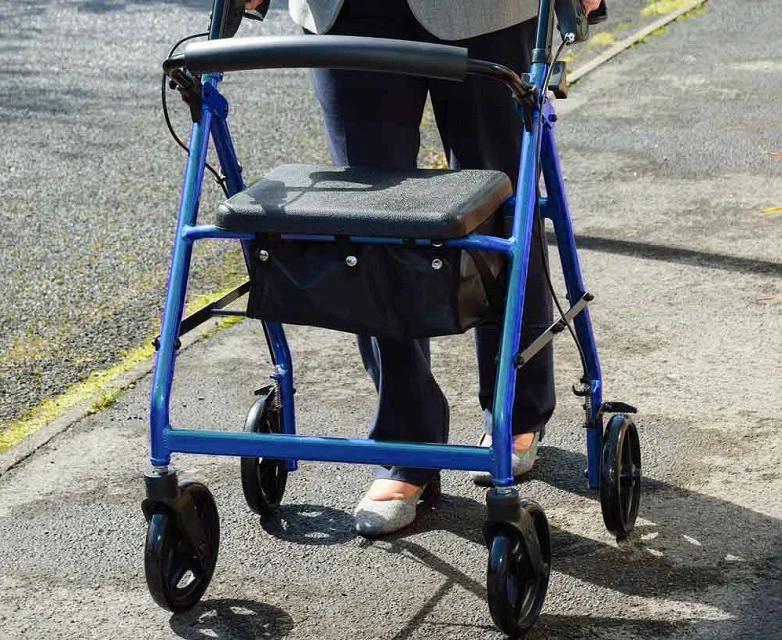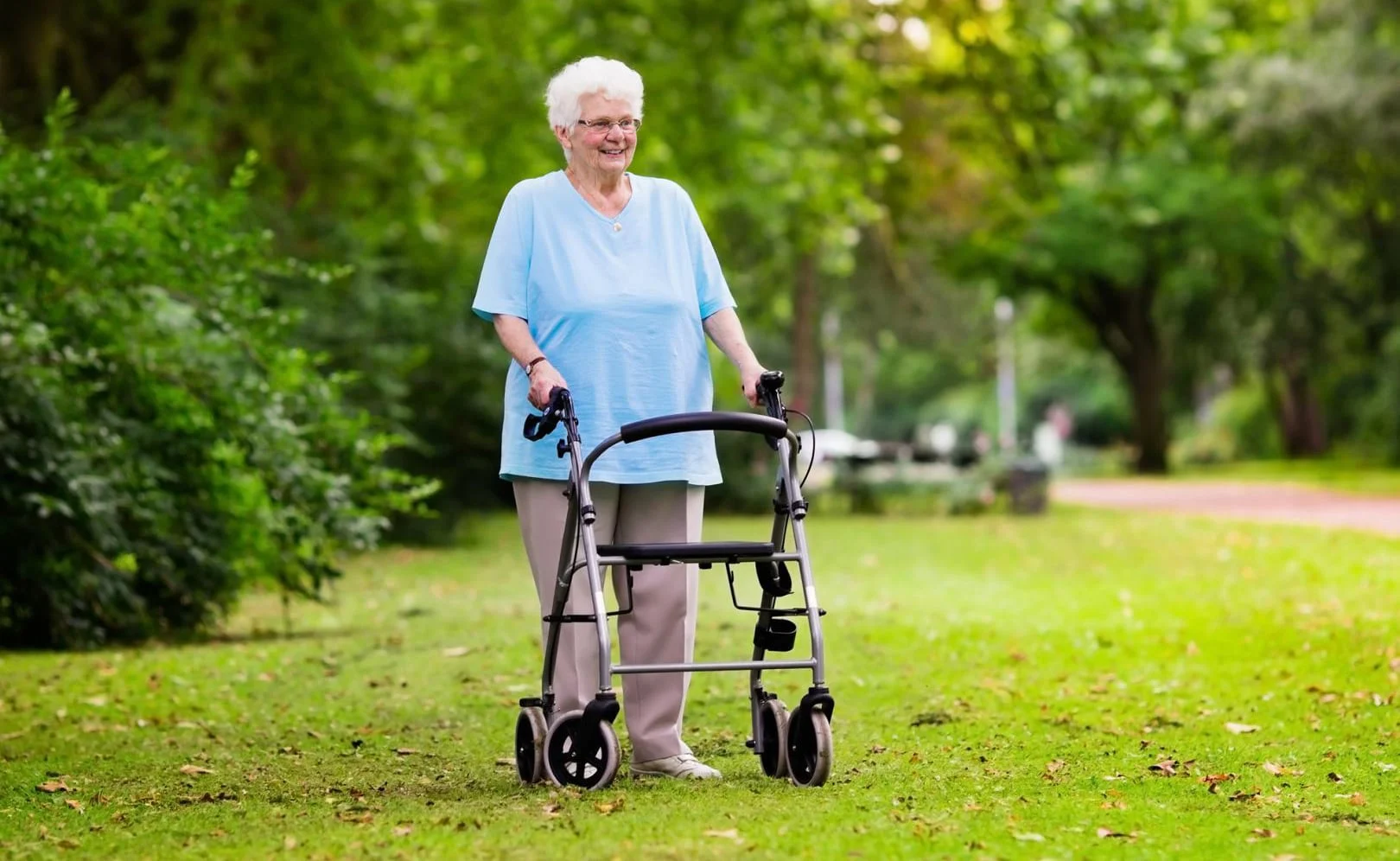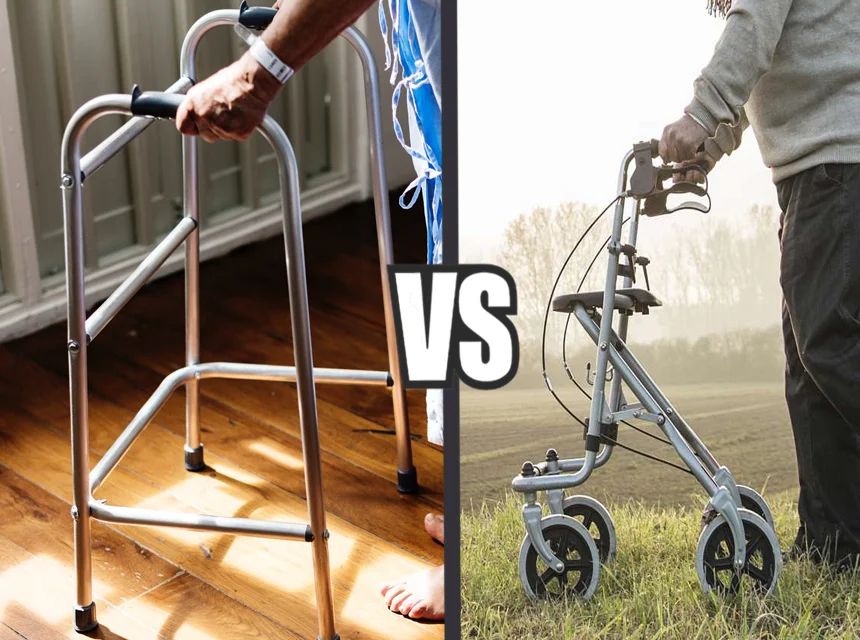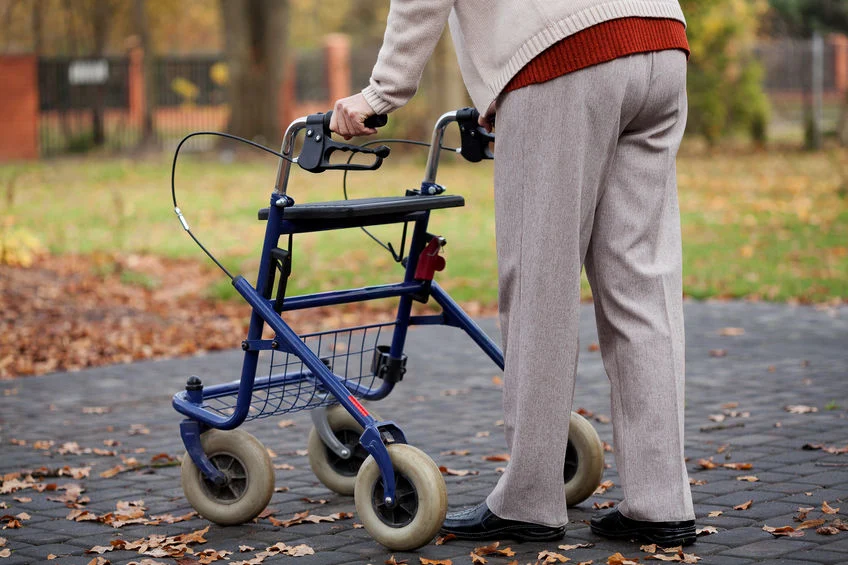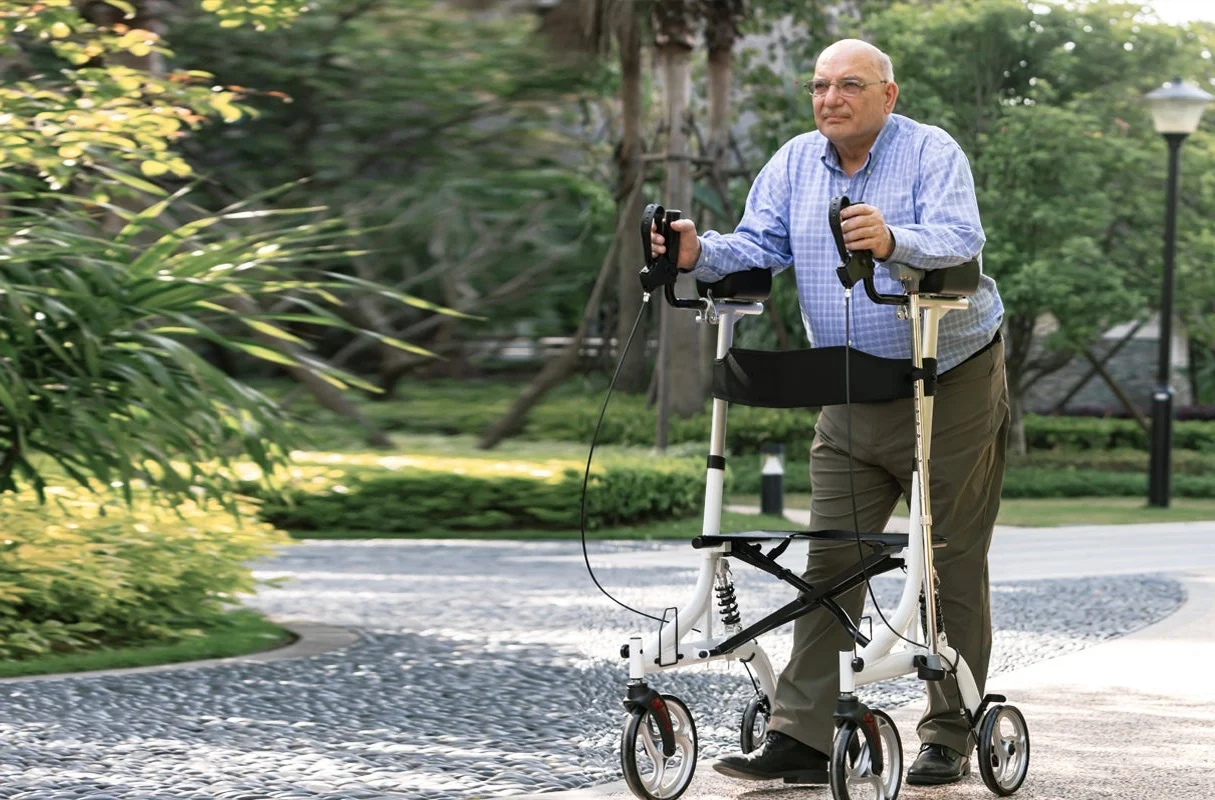A rolling walker can be a fantastic solution for people who are suffering from an injury or illness, or for elderly people who have now lost the full use of their limbs or if they are experiencing mobility problems. In this guide, we’re exploring how to use a rolling walker properly, to ensure that you aren’t doing more damage!
A rolling walker may be a better choice when compared to a frame or other walker as they can be easier to use, requiring less force to move around. Other walkers need to be picked up if you are hoping to move forward, whereas a rolling walker can be moved by using less force, a little bit like a shopping cart.
By Nan J.Corbo | ✅ Reviewed by Ray Butcher |
SeniorFitness is reader-supported. We may earn a commission through products purchased using links on this page. Learn more about our process here
What are rolling walkers

Historically, walkers were made to be moved by lifting them up and using tem as a frame to take your next step. This requires upper body strength and means it is not necessarily an option for people who have mobility issues.
Rollators (another word for rolling walkers) were invented in the 1970s – 1 to try and tackle this issue. Simply put, a rolling walker is a frame that has wheels attached to it. Some models have three wheels, and some have four. They are held in front of a person as a walking aid to give stability, but they can be moved relatively simply with a push, so you don’t have to lift the whole thing up and move it forward. The wheeled design also has the benefit of making it easier to go around bends and corners.
Who are they made for
Rolling walkers are made for anyone who needs assistance walking. A lot of the users are elderly, but people who suffer from degenerative conditions, or who are recovering from a serious injury or illness could also find that they are a really effective way to get back on their feet. A rolling walker might be an alternative to a mobility scooter. It can also help you to rebuild strength if you are planning to walk independently again in the future, or to keep your muscles working. If you use a scooter or a wheelchair, this independence could be lost.
How to set-up rollators to fit you
When you are looking into using a rollator properly, it is vital that you refer to the manufacturer’s guidelines. You will receive a manual with a new rolling walker, which will have some setup instructions. That said, some standard set-up tips can help you greatly.
The key is to get the correct height. This means you should stand upright, and measure where your wrists naturally fall by your sides. This is the height at which you should align your handles. The Drive Medical Nitro rollator has a handle height that can be adjusted between 33.5″-38.25″.
Each rollator will have an adjustment method to get the correct height. If you don’t do this, you may end up leaning in an uncomfortable position, and you could even get injured as a result. It’s easy to get back problems if you are constantly hunched. Check that you can comfortably access the brakes, usually positioned on the handles.
How to use it while standing
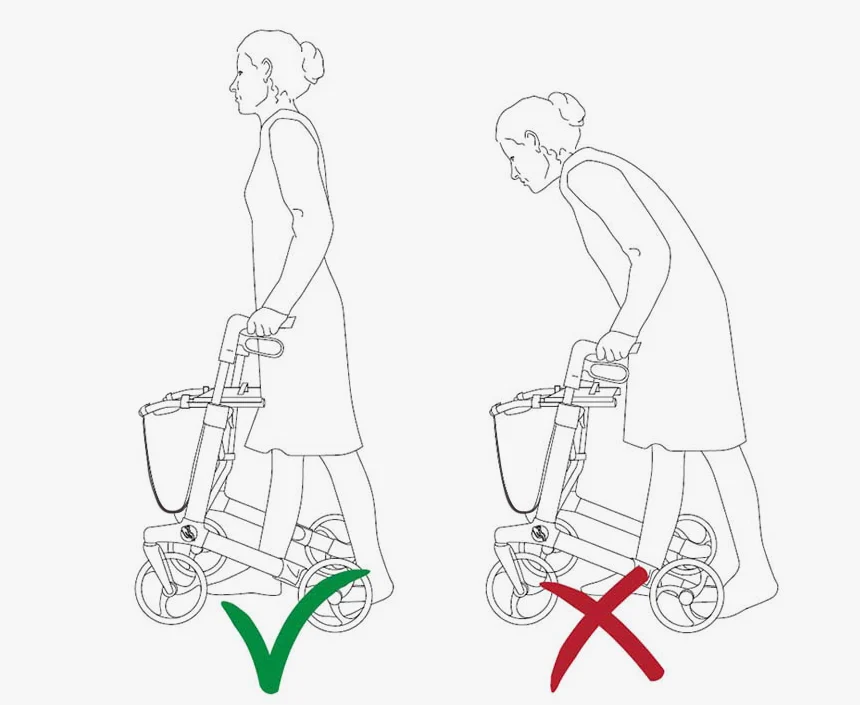
When you are standing, you will be able to set your rolling walker in position by using the brakes. A lot of rollators have a method that can allow you to keep the brakes held in place, such as a locked position. If you plan to stand still for a while, this can be a good option.
While your handles should support you and help to take the strain off your legs, you should make sure you’re not hunching or leaning forward.
You need to take a little bit of time to get used to the dimensions of your own rolling walker. Many seniors go for narrow rolling walkers as they allow them to move around the house with more ease and not bump into things.
How to use it while walking and turning
When it’s time to start walking around with a rolling walker, you will want to stand in a natural position and then test your fingers next to the brake levers. Check that the rolling walker is central and that it doesn’t cause you to lean too far forward. You can center your rollator or move it closer to you if required.
When you want to start walking, remember to transfer the weight on both legs. Your hands are only used for balancing and the actual forward momentum should still come from walking, otherwise, it is possible to fall.
When it’s time to turn, don’t take on too much! Take small steps and gradually turn the rollator to go in the same direction.
How to use it while sitting
How can you use a rolling walker for sitting? A lot of walkers, including the Medline Freedom model, allow you to sit on your walker when you are tired. This is a great option when you need to wait in line, for example. Simply lock the brakes in position and you can enjoy the padded seat and backrest to recharge while you’re on the go. You’ll always have a seat when you need one. If you are adapting from spending time in a wheelchair then this can make all the difference.
Different rollator models have different settings to keep them locked in place. Make sure you check how to do so for your particular model.
Steps, curbs and other difficulties
In the majority of locations, there should be some form of disabled access meaning you don’t need to use steps. However, it is sometimes inevitable. Single steps and curbs can be approached in the same way. You should roll the walker all the way up to the step, and use your curb-assist. This usually allows you to use a foot pedal to raise the front wheels so that they can move upwards and over the step, before rolling forward. Once your rollator is higher, you can use it to help you to lift yourself up the curb or step. Obviously, avoiding high curbs or steps is still preferable.
There are always some difficulties when you’re out and about with low mobility, but a rolling walker can make life far easier, especially if it has specific features for curb climbing.
Closing and locking a rolling walker
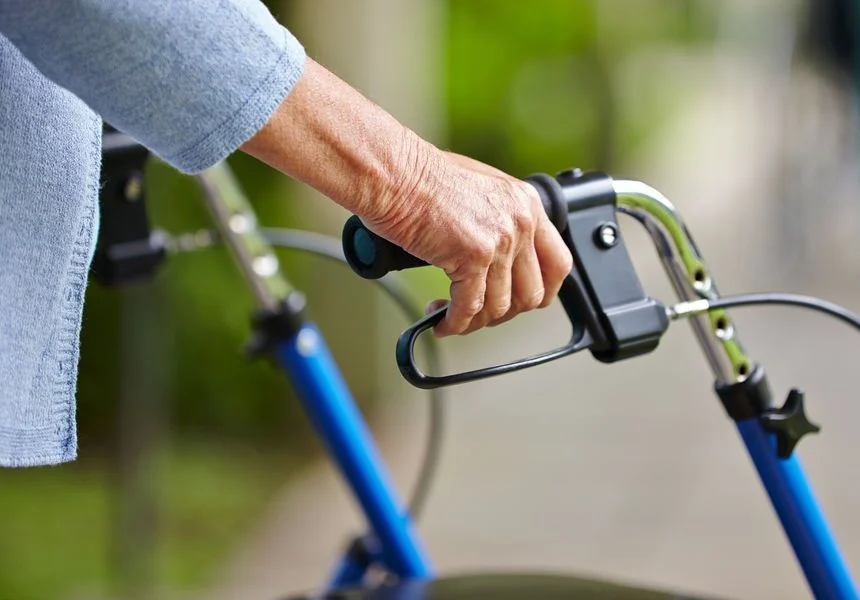
This is vital, especially if you are going to sit or stand in one position for one period of time. First, apply the brakes that you use with your hands. This allows you to keep the walker in place. Next, you need to either lock the brakes (some have a setting where they can click in place and keep it locked for a long time without having to keep your hands on it.
Some models have a strap to lock in this position, too. Be aware that you need to ensure it is locked in place before sitting or standing still without keeping your hands on the brakes situated on the handle.
How to Use a Rolling Walker Correctly
It’s important that you give some thought to your rolling walker and how to use it before you take it out in public. Spend time getting acquainted with your rollator. Although a lot of the features and functionality will come naturally after you practice walking with it, knowing how to use a rolling walker properly means setting it up right from the start. Things like learning how the brakes work and how to turn corners are essential before you take on a longer walk or more challenging journey with your rolling walker get easier if you have to correct handle setup and height for your rolling walker, and buy the right rollator in the first place to suit your needs and mobility issues.
References
- Walker (mobility) – Wikipedia – Walkers started appearing in the early 1950s. The first US patent was awarded in 1953 to William Cribbes Robb, of Stretford, UK, for a device called “walking aid”, which had been filed with the British patent office in August 1949. Two variants with wheels were both awarded US patents in May 1957, and the first non-wheeled design that was called a “walker” was patented in 1965 by Elmer F. Ries of Cincinnati, Ohio. The first walker to resemble modern walkers was patented in 1970 by Alfred A. Smith of Van Nuys, California.

